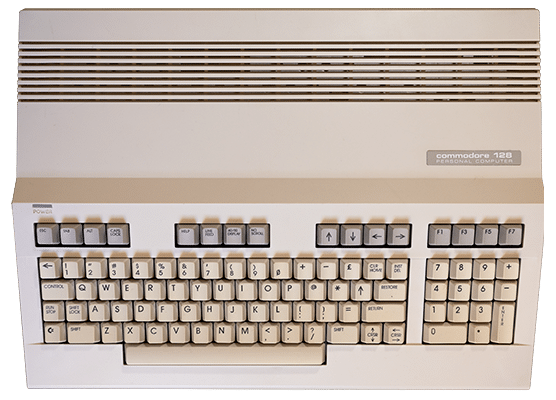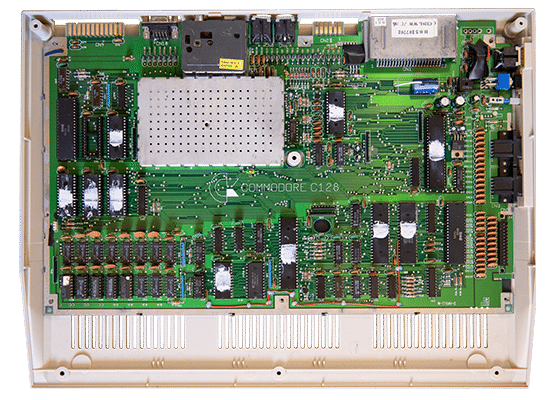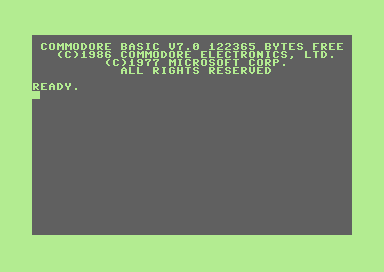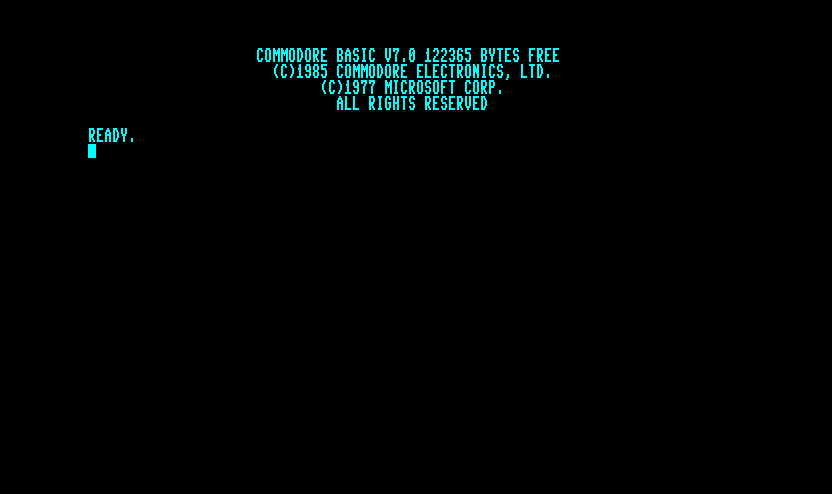

Production: 1985
OS: Kernal / Basic 7.0
Commodore 128
After the great success of the Commodore 64 and the failure of the 264 series launched a year earlier (C16, Plus 4), Commodore tries again trying to retrace its steps by proposing a computer compatible as much as possible with the C64 to exploit the enormous quantity of software already available and including other modes of operation.
Thus was born the Commodore 128, not a computer but 3 in 1! Nice is not it? The operating modes are as follows:
- C128 mode, this should be its real appearance, a computer with 128Kb of ram and Basic version 7
- CP / M mode, to be able to use the software in this format, used in a professional environment
- C64 mode, to use the software already on the market.
All new but ?!
Aesthetically much more beautiful than the classic biscuit, it has a more futuristic line and also a numeric keypad.
Inside we find two processors, a Z80 at 4Mhz (but which for reasons of bus / video timing has been slowed down for real use at 2Mhz) which manages the CP / M mode and an 8502, successor of the 6510 used for the C128 / C64. We then have two video processors, the VDC for the 128-CP / M mode (40/80 columns) and the famous VIC-II (40 columns) for the 64 mode.
Beautiful computer but also a great misunderstood, all these modes so different and obviously incompatible with each other made it difficult to use for a very specific purpose, in the end having the possibility to use it as the C64 ended up being used like this. The developers preferred to create software for the C64 to be used by which he had both systems rather than just the C128.
Why wasn't it very successful?
These different and incompatible modes did not help this computer, who would have used it as a gaming machine would have preferred the 64 because it was cheaper and also because it would not have used the CP / M mode.
For a professional environment, on the other hand, the CP / M mode was already in decline and we were moving to the new DOS system
The 128 mode, as already mentioned, did not have much software available and those who already had 64 found no reason to change it.
In this period the success of 8 bits was decreasing and new 16-bit systems were coming out, one of which was the founder of Commodore, Jack Tramiel, who had switched to Atari and just in this year presented the'Atari 520ST.


Above you can see what the 40-column (left) and 80-column (right) home screen looks like.
The Commodore 128 could use the peripherals of the C64 and if the cartridges of the predecessor were used, the computer already started in 64 mode, for the 128 a new drive was created (1571) faster than the 1541 and able to use the two faces of the disk without having to turn side.


